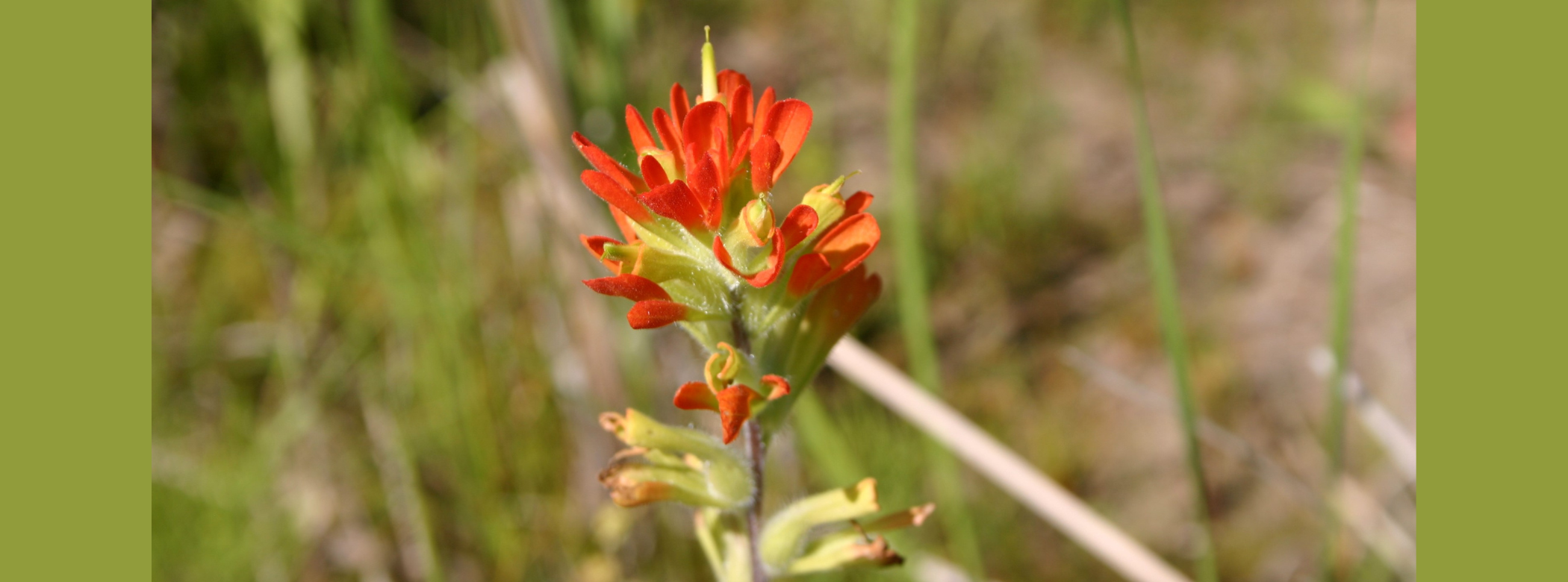Posted on: Monday May 4, 2020
It is pretty well known that plants differ from animals due to their ability to make their own food using just carbon dioxide, water and sunlight through a process called photosynthesis. But some plants are a bit lazy and figured “why should I make my own food like a sucker when I can just steal some from my neighbor?” Thus, the strategy of plant parasitism was born.
The secret to being a plant parasite is to produce modified roots, called haustoria. Rather than collecting water and minerals from the earth like normal roots, haustoria pierce the roots or stems of other plants and tap into their vascular systems. The haustoria suck up the sap from the parasitized plants, obtaining water, minerals and the product of photosynthesis: sugar. The parasitized plants are weakened but not usually killed, unless stressed for other reasons.
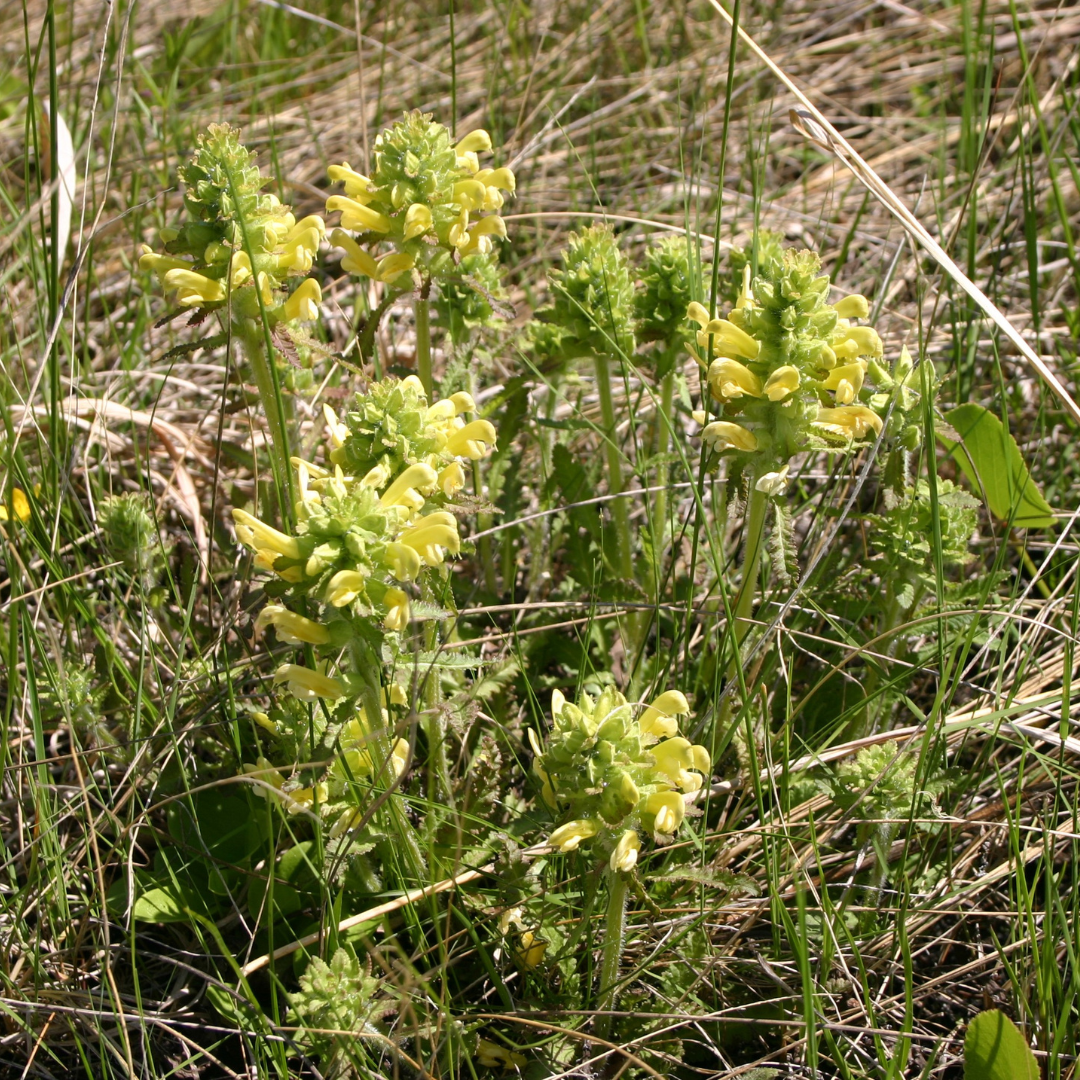
The lovely Labrador lousewort (Pedicularis labradorica) typically parasitizes dwarf birch (Betula pumila) shrubs in the boreal forest.
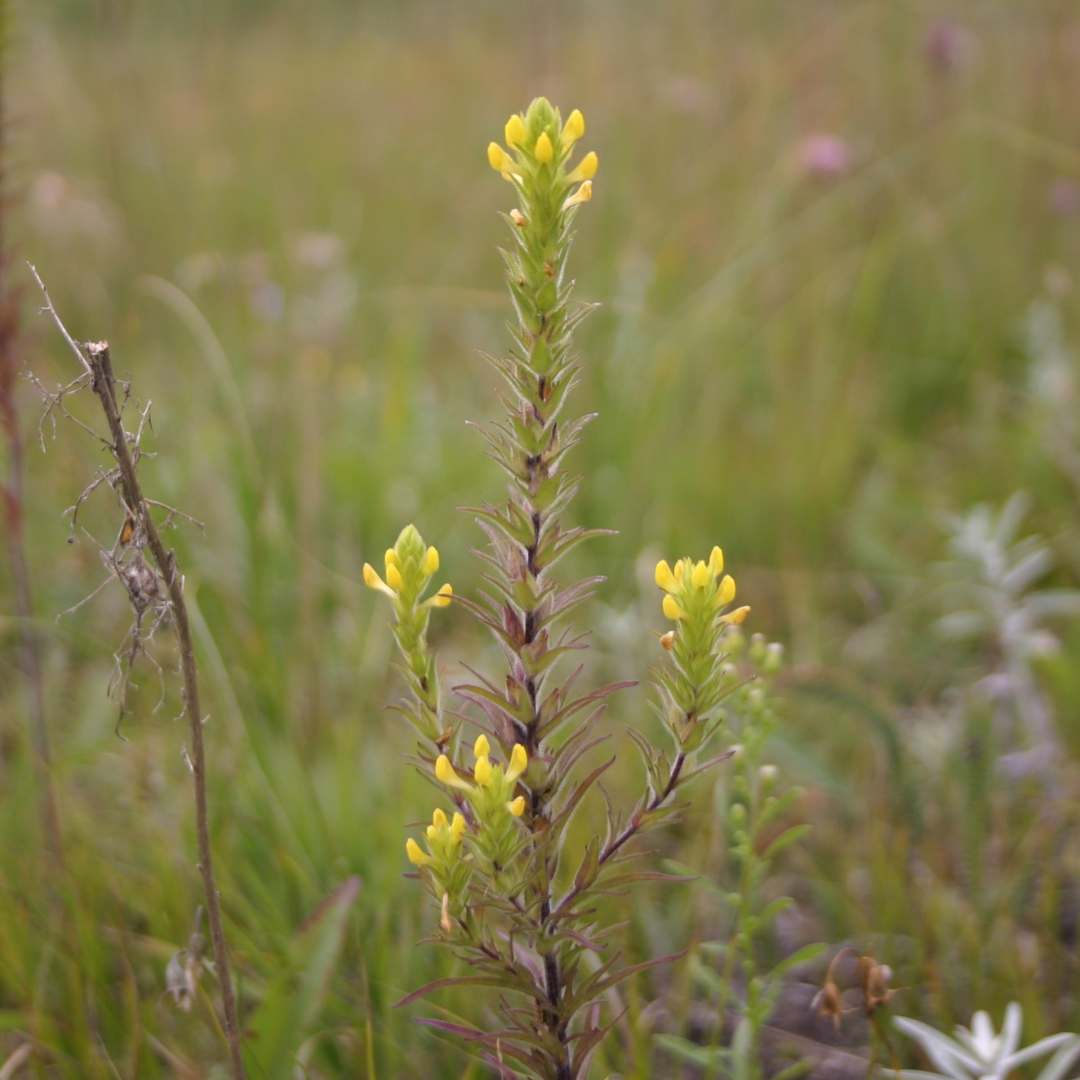
Yellow owl-clover (Orthocarpus luteus) is a fairly common plant hemi-parasite in prairies and parklands.
The evolutionary journey to parasitism was not always completed; while some species became full parasites (=holo-parasites), such as dodders (Cuscuta spp.) and dwarf-mistletoes (Arceuthobium spp.), others are only partial parasites (=hemi-parasites). Hemi-parasites still produce green leaves and are capable of photosynthesis, unlike the holo-parasites, which no longer perform any photosynthesis at all. Through their haustoria, hemi-parasites obtain mainly water and minerals from the parasitized plants, which means they can grow in habitats where they might normally be at a competitive disadvantage in terms of their ability to obtain enough soil resources.
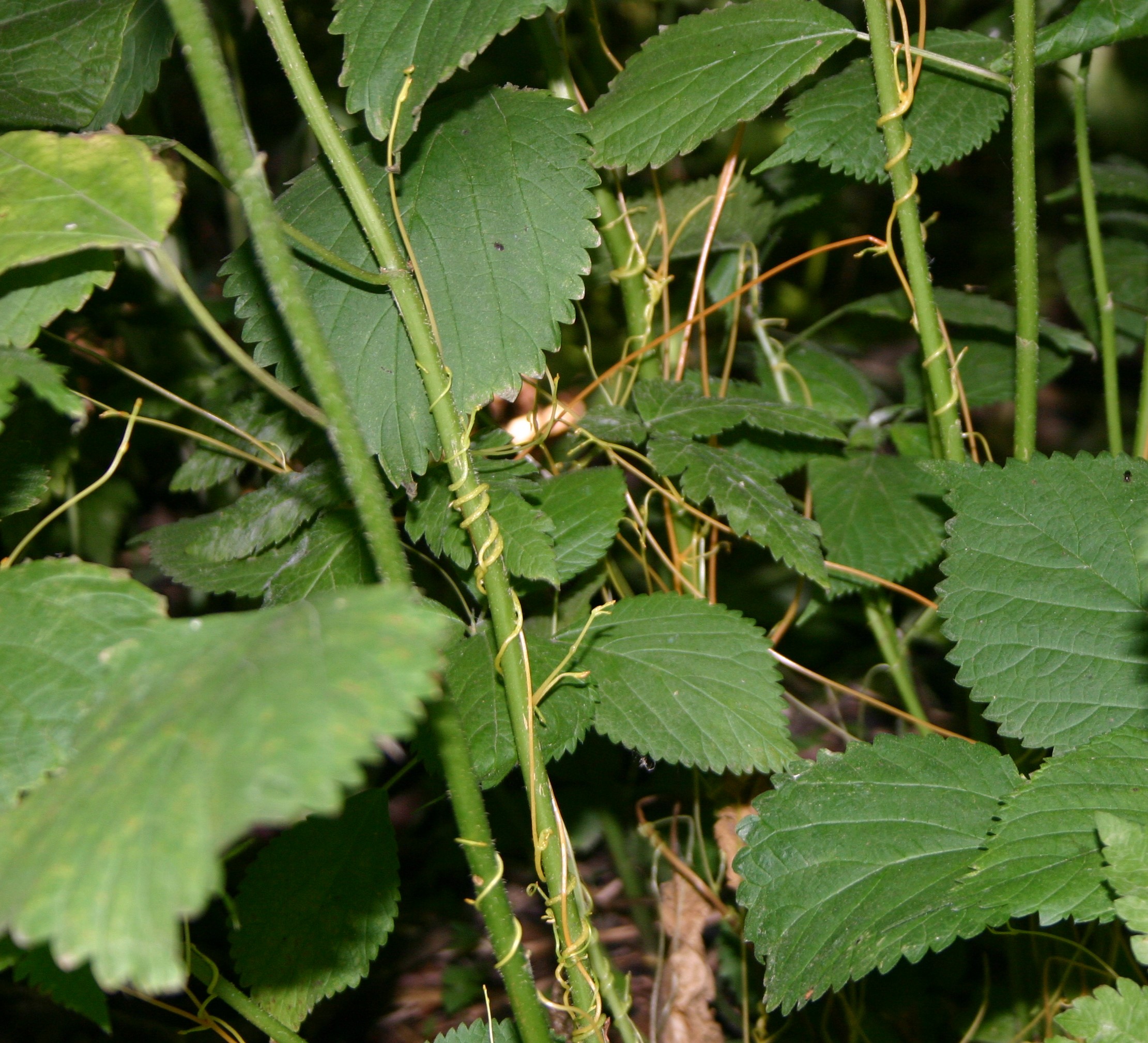
There are many species of hemi-parasites that grow in the wilds of Manitoba but they are not all related. World-wide, parasitism appears to have evolved independently at least 12 times. In this province there are three families that contain parasitic plants: the Morning-Glory, Sandalwood, and Broom-rape families. The Morning-glory family contains the aforementioned dodders; plants that twine up the stems of other plants and steal sugar from them. In Manitoba the entire dodder genus is on the noxious weeds list although none of the species are terribly common. In fact, two species of dodder that typically infect native plants, buttonbush dodder (Cuscuta cephalanthi) and hazel dodder (C. coryli), are considered critically imperilled in Manitoba. Common or swamp dodder (C. gronovii) is slightly more abundant, but not a major weed.
The tiny common dodder (Cuscuta gronovii) wraps its stems around those of native plants like stinging nettle (Urtica dioica).
The Sandalwood family contains the most common parasites in the province: the holo-parasite dwarf-mistletoe, and the hemi-parasites pale comandra (Comandra umbellata) and false toadflax (Geocaulon lividum). Pale comandra typically grows in dry prairies, parasitizing a wide variety of common plants like asters and roses, while false toadflax is found in our northern forests living off of woody plants like bearberry (Arctostaphylos spp.) or asters.
All plants in the Broom-rape family including paintbrushes (Castilleja spp.), owl’s-clover (Orthocarpus luteus), louseworts (Pedicularis spp.), eyebrights (Euphrasia spp.), cow-wheat (Melampyrum lineare), and false foxgloves (Agalinus spp.) are hemi-parasites. Many of the broom-rapes have colourful, fragrant, two-lipped flowers that attract and support many pollinators, typically bees and butterflies. In Manitoba, 15 of the plants in this family are considered rare (ranked as critically imperilled, imperilled or vulnerable by the Manitoba Conservation Data Centre). Gattinger’s agalinis (Agalinis gattingeri) and rough agalinis (A. aspera) are both extremely rare and legally protected under the national Species-at-risk Act, 2002 and the provincial Endangered Species and Ecosystems Act, 2018. The rare and unusual-looking broomrapes (Orobanche spp.) are holo-parasites on wild asters, possessing no leaves, just coppery-coloured stems and large white, yellow or purplish flowers. Many of these rare parasitic plants grow in our endangered native prairies, dependent on the wild plants that grow there, which are themselves increasingly rare due to exotic species encroachment, habitat loss and climate change. Clearly, being a parasite is not as carefree as it sounds.
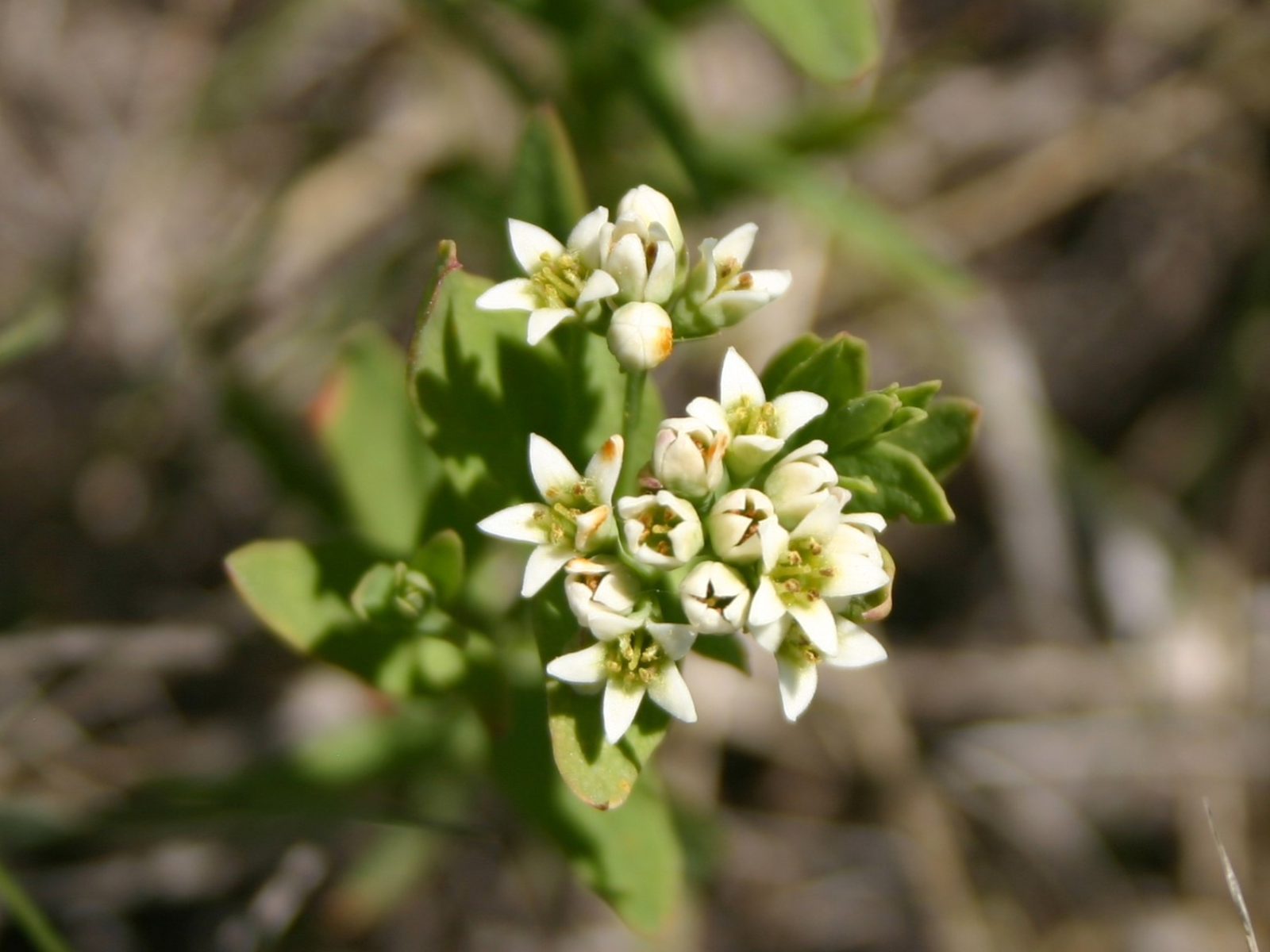
Like all plant parasites, pale comandra (Comandra umbellata) will not grow in a garden setting unless an appropriate host plant is nearby.
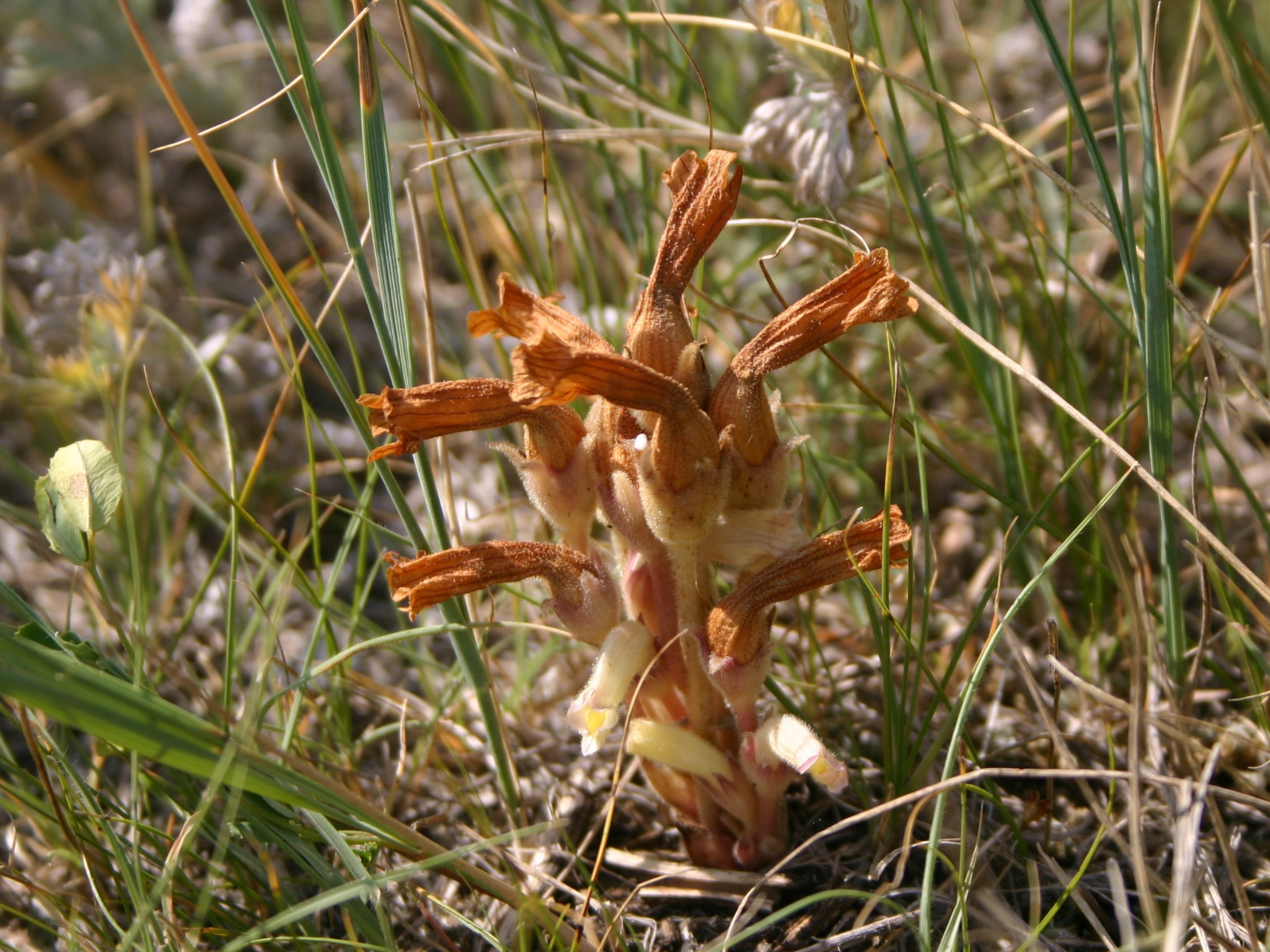
The holo-parasite, clustered broom-rape (Orobanche fasciculata) can be found on sandy soils in places like Spruce Woods Provincial Park.
Now that you know they exist, be on the lookout for these, sometimes lovely, sometimes ugly, groups of free-loading plants.




